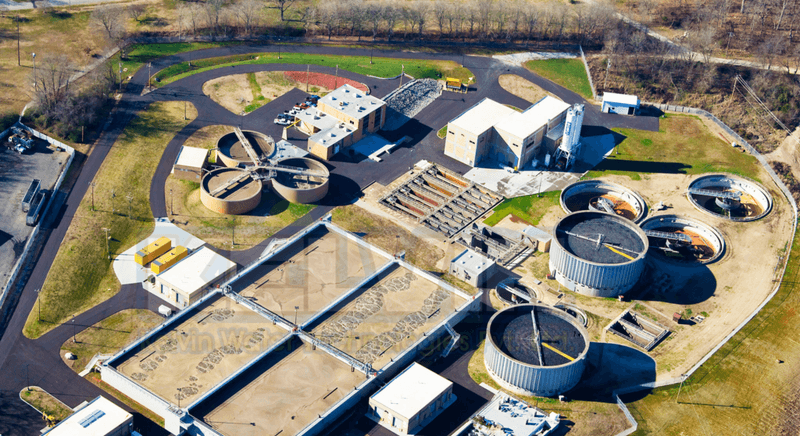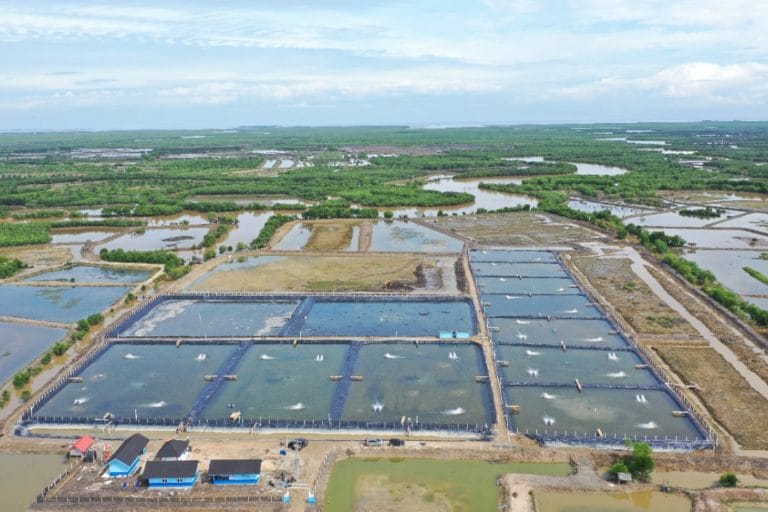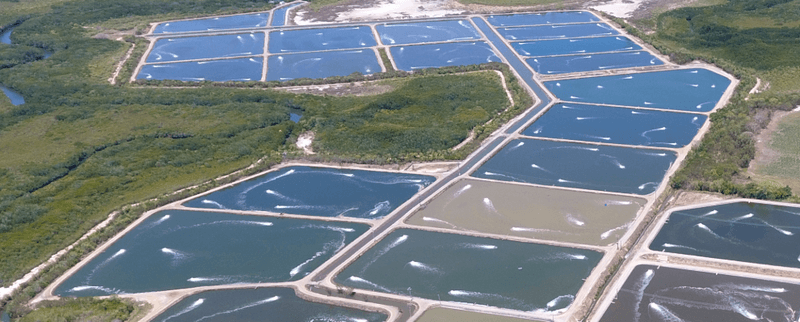Tackling the Wastewater Challenge in Aquaculture: Sustainable Solutions and Innovations
Aquaculture, the practice of farming aquatic organisms such as fish, shellfish, and algae, has seen unprecedented growth in recent years. As this industry expands, so too does the volume of wastewater it generates. This wastewater, a byproduct of the farming process, presents significant challenges that need addressing to ensure the sustainability of aquaculture operations. This blog delves into the complexities of wastewater from aquaculture facilities, exploring its environmental impacts, the intricacies of various treatment methods, and the future of sustainable wastewater management.

The Nature and Composition of Aquaculture Wastewater
Aquaculture wastewater is a heterogeneous mix of organic and inorganic pollutants. The primary contributors include nutrients, organic matter, pathogens, and chemicals. Understanding the composition of this wastewater is crucial for developing effective treatment solutions.
Nutrients are a significant component of aquaculture wastewater. They originate from uneaten feed and fish excrement. Excessive levels of nitrogen and phosphorus are particularly concerning because they can lead to eutrophication. This process, wherein an overabundance of nutrients causes excessive growth of algae and aquatic plants, can deplete oxygen levels in the water and create dead zones where aquatic life cannot survive.
Organic matter in wastewater comprises fish feces and residues from uneaten feed. This organic debris can contribute to the depletion of dissolved oxygen in the water, affecting both farmed and wild aquatic species. When organic matter decomposes, it releases harmful substances that can further degrade water quality.
Pathogens and chemicals are another critical concern. Pathogens, including bacteria, viruses, and parasites, can be present in wastewater and potentially spread to wild populations, causing outbreaks of diseases. Chemicals used in treatments or for disease control can also be present, posing additional risks to both aquatic life and human health.
Environmental Implications of Aquaculture Wastewater
The discharge of untreated or inadequately treated aquaculture wastewater into natural water bodies can have severe environmental consequences. One of the most significant impacts is eutrophication, which can result in algal blooms that deplete oxygen levels and create hypoxic conditions detrimental to marine life. These blooms can lead to "dead zones," where oxygen levels are too low to support most forms of aquatic life. This phenomenon not only affects the immediate environment but can also disrupt entire ecosystems and food chains.
Another critical issue is habitat degradation. The accumulation of sediment and organic matter from aquaculture wastewater can smother important habitats like coral reefs and seagrass beds. This sedimentation disrupts benthic communities and alters the natural balance of ecosystems, leading to a loss of biodiversity and resilience.
The potential spread of disease is a significant concern as well. Pathogens in wastewater can infect wild fish populations, leading to outbreaks that can devastate native species and disrupt local fisheries. The spread of disease can have cascading effects on entire ecosystems, affecting predator-prey relationships and the health of other marine organisms.

Exploring Sustainable Wastewater Management Solutions
Effective wastewater management is essential for mitigating the environmental impacts of aquaculture. Several advanced treatment solutions offer promising approaches to managing wastewater sustainably, each with its own set of advantages and challenges.
Recirculating Aquaculture Systems (RAS) represent a major innovation in wastewater management. RAS technology is designed to minimize water exchange and reuse water within the system, drastically reducing the volume of wastewater generated. These systems use a combination of mechanical and biological filtration to remove pollutants, allowing for better control over water quality. The closed nature of RAS systems helps prevent the spread of diseases to wild populations.
Despite their advantages, RAS systems come with certain challenges. The initial setup cost can be high due to the need for specialized equipment and infrastructure. Additionally, the complexity of RAS systems often results in higher energy consumption, which can impact their overall sustainability.
Integrated Multi-Trophic Aquaculture (IMTA) is another promising approach that integrates multiple species at different trophic levels within the same system. For example, fish are farmed alongside shellfish, which filter feed from the water, and macroalgae, which absorb nutrients. This integration helps to recycle waste products from one species into valuable nutrients for others, creating a more balanced and sustainable system.
IMTA systems offer several benefits, including reduced nutrient discharge and enhanced biodiversity. However, managing the interactions between different species can be complex, and market demand for some of the species used in IMTA systems may be limited.
Constructed Wetlands provide a natural and cost-effective method for treating wastewater. These engineered systems mimic the functions of natural wetlands, using plants, microorganisms, and substrates to filter and break down pollutants. Constructed wetlands can create valuable wildlife habitats and support biodiversity, offering a dual benefit of wastewater treatment and ecological enhancement.
However, constructed wetlands require a significant amount of land area, which may not be feasible for all aquaculture facilities. Additionally, their efficiency can be influenced by climatic conditions, such as temperature and precipitation.
Biofloc Technology involves cultivating microbial communities within the aquaculture system to help break down waste products and improve water quality. The presence of beneficial microorganisms enhances nutrient utilization and reduces the amount of waste generated.
Biofloc systems can be highly effective in reducing environmental impact and conserving water. However, maintaining the right balance of microorganisms and nutrients can be challenging, and the initial setup and operational costs may be higher compared to traditional systems.
Policy and Regulatory Considerations
Effective wastewater management in aquaculture also requires adherence to regulatory standards and best practices. Governments and regulatory bodies play a crucial role in setting guidelines for wastewater treatment and discharge. Key considerations include:
Permitting and Compliance: Aquaculture facilities must obtain the necessary permits and comply with local and national regulations regarding wastewater discharge. These regulations are designed to ensure that wastewater treatment meets environmental standards and minimizes impacts on natural water bodies.
Monitoring and Reporting: Regular monitoring and reporting of wastewater quality are essential for ensuring compliance with regulatory standards. Facilities must track key parameters, such as nutrient levels and pathogen concentrations, and report their findings to regulatory authorities.
Incentives for Sustainable Practices: Governments may offer incentives or subsidies to encourage the adoption of sustainable aquaculture practices and technologies. These incentives can help offset the costs of implementing advanced treatment solutions and support the transition to more sustainable practices.

Future Directions and Innovations
The field of aquaculture wastewater management is continuously evolving, with ongoing research and innovation aimed at improving sustainability. Several promising developments are on the horizon:
Advanced Filtration Technologies: Innovations in filtration, such as membrane bioreactors and nanotechnology, offer improved efficiency in removing pollutants from wastewater. These technologies have the potential to enhance treatment performance and reduce environmental impacts.
Circular Economy Approaches: Integrating aquaculture with other industries, such as agriculture and energy, can create circular systems that maximize resource use and minimize waste. For example, nutrient-rich wastewater from aquaculture can be used to fertilize crops, while algae cultivated in aquaculture systems can be used for bioenergy production.
Smart Monitoring Systems: The use of Internet of Things (IoT) and artificial intelligence (AI) for real-time monitoring and management of water quality and system performance is becoming increasingly feasible. These technologies can provide valuable insights into wastewater treatment processes and help optimize operations for better environmental outcomes.
Conclusion
Managing wastewater from aquaculture facilities is a critical aspect of ensuring the sustainability of the industry. By adopting advanced treatment technologies, implementing sustainable practices, and adhering to regulatory standards, aquaculture operations can mitigate their environmental impact and promote a healthier ecosystem. The continued development of innovative solutions and the integration of circular economy principles will play a key role in shaping the future of sustainable aquaculture.
For aquaculture operators, industry professionals, and policymakers, staying informed about the latest advancements in wastewater management is essential for achieving long-term sustainability. Through collaborative efforts and a commitment to continuous improvement, the aquaculture industry can navigate the challenges of wastewater management and contribute to a more sustainable future for both aquatic ecosystems and human communities.